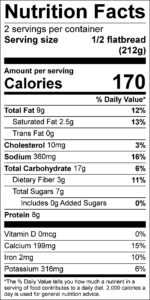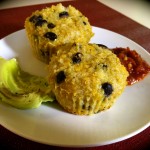Craving something fresh and flavorful? Try our zesty veggie flatbread, loaded with vibrant vegetables! Perfect for a quick lunch or a light dinner, it’s a delightful way to enjoy your greens.

- 2 servings Homemade Pesto
- 1/4 cup roasted red peppers
- 1/2 cup cherry tomatoes halved
- 1/4 cup red onion chopped
- 1/2 cup Asparagus spears sliced on bias (about 4 spears)
- 1/2 cup carrots sliced in rounds
- 1/4 cup mozzarella cheese shredded, low sodium
- 1 flatbread
- 2 Tablespoons fresh basil for garnish
- Preheat oven to 425 degrees and rinse all fresh vegetables under cool running water before preparing.
- Prepare pesto according to recipe directions https://dinnertonight.tamu.edu/recipe/pesto/.
- Prepare all toppings - roasted red peppers, cherry tomatoes, red onion, asparagus, carrots, mozzarella cheese and garnish
- Lay flatbread on non stick baking sheet. Spread made pesto on flatbread leaving about ½ inch along the edge.
- Layer the vegetable toppings on top of pesto on flatbread. Sprinkle half of mozzarella and save the rest for topping after baking.
- Bake in the oven for 20 minutes until edges are brown and crispy and vegetables are softened but still have a little firmness to them.
- Remove flatbread from the oven and sprinkle the remaining mozzarella cheese and basil leaves for garnish. Enjoy!






 Keep Food out of the “Danger Zone”
Keep Food out of the “Danger Zone” When reheating leftovers, be sure they reach 165° F as measured with a food thermometer. Reheat sauces, soups, and gravies by bringing them to a rolling boil. Cover leftovers to reheat. This retains moisture and ensures that food will heat all the way through.
When reheating leftovers, be sure they reach 165° F as measured with a food thermometer. Reheat sauces, soups, and gravies by bringing them to a rolling boil. Cover leftovers to reheat. This retains moisture and ensures that food will heat all the way through.



